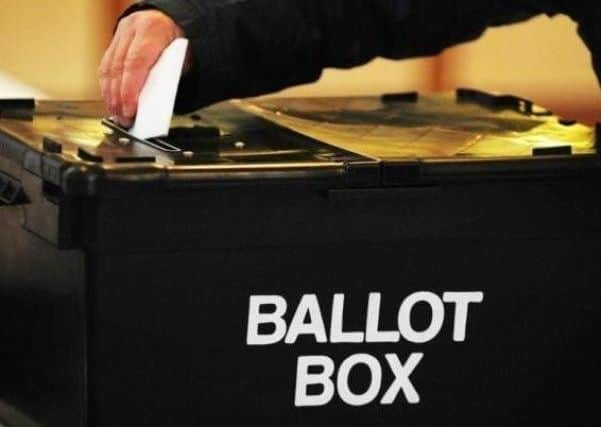Will local election ballot battle transform Leeds's political map?


Over the next two weeks leading up to polling day, the Yorkshire Evening Post will be publishing a series of articles focusing on Leeds’s 33 wards, and the key issues in each which could be vote swayers.
Each ward in Leeds has three councillors, with some currently dominated by particular parties and others split with a mixed representation.
Advertisement
Hide AdAdvertisement
Hide AdOur detailed ward map above lays out how the city currently looks in terms of political representation at Leeds Civic Hall, but that could all change next month.
Because electors are choosing three councillors, they each get three votes, meaning some people could be persuaded to put pure party allegiances aside and split their votes.
The last time there was an all-out local election in Leeds, Labour lost control of the authority after a 24-year reign.
Instead, the city was ruled for the next few years by an unlikely – at the time – coalition of the Conservatives, Lib Dems and Greens.
Advertisement
Hide AdAdvertisement
Hide AdLabour wrenched back control in 2010 – albeit with a minority administration – just as the country was going the other way and ushering in the Cameron/Clegg era.
But the following year it was a different story, as the Lib Dems were crushed, and Labour sealed its grip on Leeds again with seven gains taking it to 55 seats.
That trend continued for several years, and in 2016, Labour had 63 of the seats, a seemingly unassailable position.
But after a turbulent year last year for the ruling administration at Leeds Civic Hall, which saw five Labour councillors defect to go independent, its majority was slashed to 17.
Advertisement
Hide AdAdvertisement
Hide AdThe make-up of Leeds City Council is currently Labour 58; Conservative 19; Liberal Democrat 9; Morley Borough Independents 5; Green Party 3.
The aforementioned defectors make up the remaining five.
Twenty of the city council’s sitting councillors – a fifth of the total – from across the parties have chosen to stand down this year, so there will definitely be a swathe of new faces in the Leeds Civic Hall chamber after May 3.
But with whispers of an imminent surge by independent candidates – at least two wards are looking particularly vulnerable – could the city’s political landscape be set for a change too?
In Leeds, a third of city council seats are traditionally contested every year, with the fourth being a fallow year and all-out elections coming round once in a while.
Advertisement
Hide AdAdvertisement
Hide AdAt the last local elections in Leeds in 2016, independent candidates secured almost 8,000 votes.
In total across the city, 334 candidates are standing in 33 different wards, an average of 10 per ward.
As well as the big four (Conservative, Labour, Lib Dem, Green) and the various independent candidates, there is a smattering of fringe party candidates including from The Yorkshire Party, and a number of trade union affiliated parties fighting on a primarily anti-austerity ticket.
The newly formed far-right For Britain Movement is fielding six candidates, and Ukip is putting up just seven. In total, 20 different party names will appear on Leeds voters’ ballot papers on May 3.
Advertisement
Hide AdAdvertisement
Hide AdTurnout will, of course, be a factor in the final result. The last Leeds council election was in 2016, a month before the EU referendum. But while the turnout for the referendum was 70 per cent in Leeds, the citywide turnout for the local elections was just 34.5 per cent, with just 185,616 people voting out of a total electorate of 538,012. Every seat contested was held by the incumbent party.
The lowest turnout of 23 per cent was in Hyde Park, a student-heavy area. But even in working class Labour heartlands like Hunslet and Middleton, turnouts were just 25 per cent. The highest turnouts were in more affluent districts, in Otley and Yeadon (a Lib Dem stronghold) with 45.1 per cent, and Adel and Wharfedale (dominated by the Tories) with 45.5 per cent.